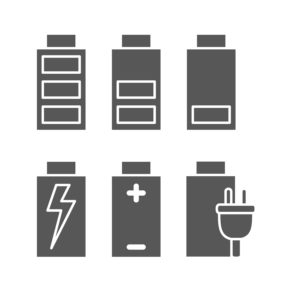 Innovators, businesses, and consumers alike are eagerly catching the Internet of Things (IoT) wave as it gains momentum and magnitude. The technology that will continue to power this wave of connected devices remains debatable, however, as there are a number of power players contending for the spotlight in the low power Internet of Things space. Below are several big names that have emerged thus far:
Innovators, businesses, and consumers alike are eagerly catching the Internet of Things (IoT) wave as it gains momentum and magnitude. The technology that will continue to power this wave of connected devices remains debatable, however, as there are a number of power players contending for the spotlight in the low power Internet of Things space. Below are several big names that have emerged thus far:
- Bluetooth Low Energy (BLE): BLE (a.k.a. Bluetooth Smart) is the low-power version of its parent Bluetooth standard, which has often been considered a leader in the short-range wireless audio market (Frenzel, 2017). Combining different radio and technical techniques along with low-power sleep modes and low duty cycles allow BLE to reduce power consumption and extend the battery life on a coin cell for years (Frenzel, 2012).
- Wi-Fi® and Wake-Up Radio (WUR): Wi-Fi® is also a major short-range option widely used today, but the original standard versions alone may not be optimal choices for the Internet of Things (IoT) because “power consumption is generally high and its available data rate goes far beyond what’s needed for most applications” (Frenzel, 2017). White-Fi (a.k.a. 802.11af) and HaLow (a.k.a 802.11 ah) are both good options for long-range uses though. Wake-Up Radio, currently in development from the IEEE 802.11ba standards task group, is a groundbreaking solution for the Wi-Fi® power consumption dilemma, designed to preserve efficiency while consuming little power.
- 5G: According to a 2017 Ericsson Mobility Report, 5G is projected to transmit data approximately 10 times faster than 4G LTE in the long-range cellular network (Shields, 2017). Such a change will reduce low latency, i.e. allow devices to quickly process and transmit large amounts of data, thereby increasing efficiency (Shields, 2017). Agwani (2017) calls 5G a “catchall for the next generation(s) of cellular networks” because it will be “ultra-reliable” and it will “enable real-time low-energy, low-bit-rate, seamless connectivity for billions of new IoT devices.”
- LoRaWAN (Long Range Wide Area Network): Called LoRa for short, this specification from LoRa Alliance “is designed for long-range, low-power operation with sensors and controls that work off batteries or energy-harvesting devices” (Wong, 2017). It has a wide breadth of applications, spanning from the logistics industry to smart infrastructure and agriculture, and it is particularly beneficial for buildings because its range can penetrate barriers like walls (Wong, 2017). The only downside is that LoRa does not operate quickly, topping out at 50 kbits/s, but otherwise “LoRa fills a gap between LANs* like Bluetooth, Zigbee, and Wi-Fi and wide area networks like cellular” (Wong, 2017).
*LANs: Local Area Networks
These power players are only a few among numerous low power Internet of Things connectivity options that vary along the wireless range. With a growing number of IoT devices entering our personal and professional lives, utilizing a low-power option will be increasingly crucial.
Are you interested in learning more about Wake-Up Radio and how to utilize this technology with IoT devices in your organization? Check out the IEEE Technology Report on Wake-Up Radio: An Application, Market, and Technology Impact Analysis of Low-Power/Low-Latency 802.11 Wireless LAN Interfaces coming this November. Pre-order now!
References:
Frenzel, L. (2012, Nov 29). What’s the difference between Bluetooth Low Energy and ANT? Electronic Design.
Frenzel, L. (2017, May 16). Long-Range IoT on the road to success. Electronic Design.
Frenzel, L. (2017, Jul 21). How Bluetooth Mesh impacts IoT design. Electronic Design.
Shields, N. (2017, Jun 15). Here’s how 5G will revolutionize the Internet of Things. Business Insider.
Wong, W. (2017, Jul 10). LoRaWAN is made for IoT. Electronic Design.


No comments yet.